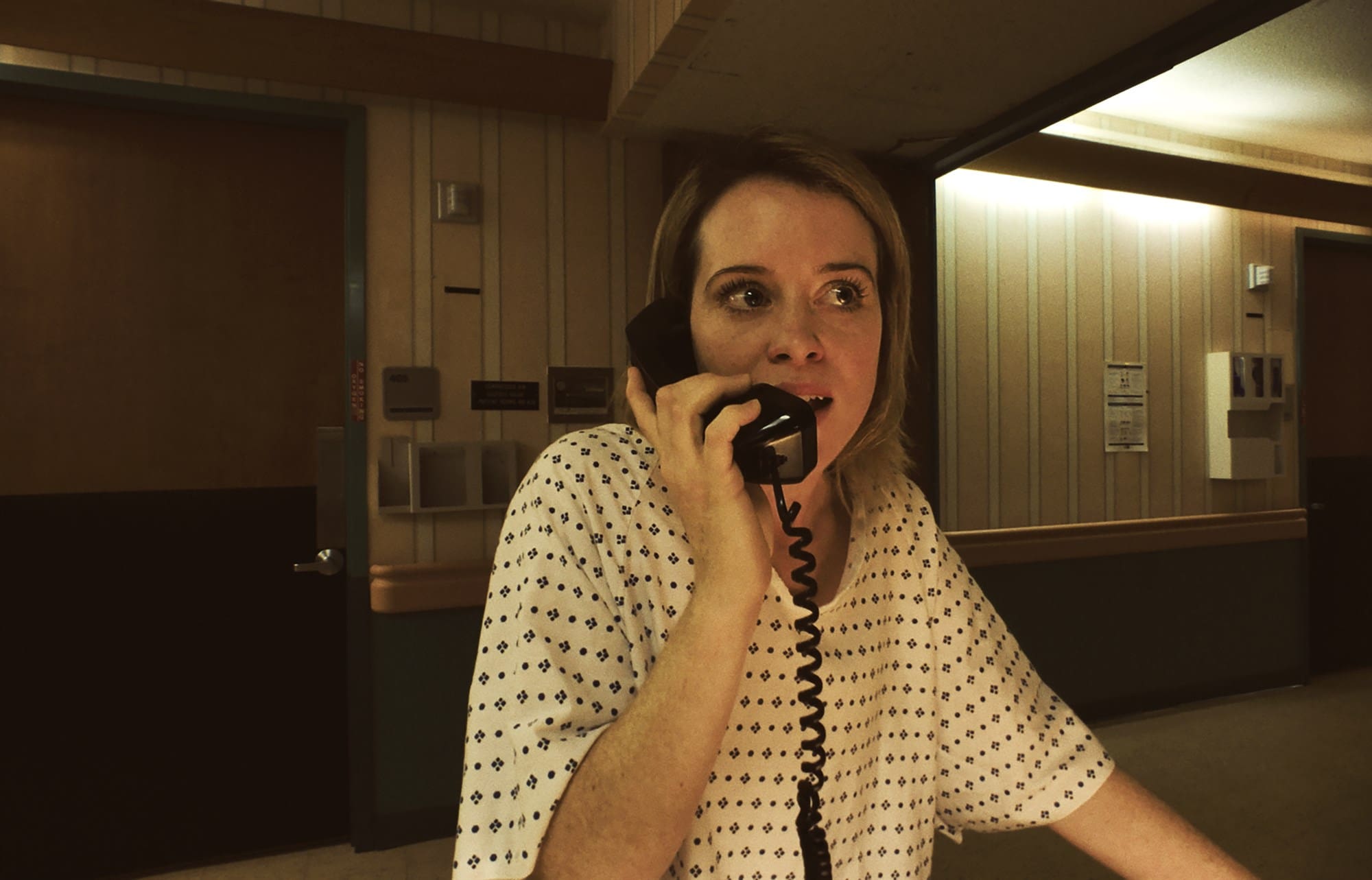
The concept of “gaslighting” isn’t new. It comes from Patrick Hamilton’s 1938 play, Gas Light, about a man who tries to convince his wife she’s going insane by turning down the gaslights in their house and pretending nothing has changed. Though many Americans have experienced that specific type of psychological manipulation in the last few years, it’s usually deployed on a much smaller scale.
In Sawyer Valentini’s case (The Crown‘s Claire Foy), the protagonist of director Steven Soderbergh’s new film, Unsane, it comes from her stalker and the mental hospital she’s unwillingly checked into.
At first, writers Jonathan Bernstein and James Greer play it coy. Claire clearly isn’t fine. She’s mean and distant from her co-workers and when she meets a guy in a bar, she ends up screaming and pushing him away when they kiss. She’s clearly suffering from some mix of PTSD and paranoia after escaping her stalker. She goes to a local mental hospital for help. From Claire’s perspective, the doctors trick her into submitting herself for 24 hours, but from the way it’s edited and filmed, it’s not quite clear if Sawyer is so far gone that maybe she really did admit herself. And even when a man she claims looks like her stalker appears, there’s still a chance she’s suffering from paranoid delusions.
While the writing helps keep the audience unsure of who to trust, it’s the execution that sells it. One major element of that is the way it’s filmed. Unsane was shot exclusively on drone and iPhone7 Plus cameras, with a few special lenses and an app called FiLMiC Pro that gave Soderbergh more control over aspects like focus and shutter speed. As a result, the camera is constantly on the move and almost always subjective.
At the beginning, we see Sawyer from afar with something always partially obstruction our view, as if we’re seeing though the eyes of her stalker. When she goes to the hospital, it’s locked on Claire and always reflecting her mental state. When she panics after realizing she can’t leave the hospital, the camera is mere inches from her face, leaving it distorted. When she’s given the wrong drug, the image doubles and becomes shaky, mirroring her state of mind. They’re bold stylistic choices and unexpected for Soderbergh. However, they wouldn’t work quite as well without Foy in the lead.
As Queen Elizabeth II on Netflix’s The Crown, Foy was dignified and restrained. As Sawyer, she’s a brassy Bostonian with a superiority complex. There’s a prickliness to Sawyer that feels like a dare to dislike her, a dare to make the audience think she might deserve to be taken down a peg only to realize how awful that thought would be. Still, there’s something eminently watchable in her performance and Foy imbues Sawyer with a certain pathos.
Perhaps it’s precisely that prickliness that makes the audience root for her. She’s a bitch, but she’s clever and totally undeserving of her stalker’s menace. And as it become clearer and clearer that she’s a victim of both a simpering psycho and a medical system that only sees her as a walking dollar sign, she comes alive.
It’s like Misery without the perverse sense of humor. Or at least, it’s not funny to any woman who’s ever felt gaslit by a man who just won’t back off. Compassion isn’t usually one of the defining characteristics of Soderbergh’s films and something about the way he and writers Bernstein and Greer portray this story suggests they don’t quite understand the particular sense of powerlessness a threatened woman can feel. It’s perhaps why they seem to have so little restraint when it comes to torturing Sawyer. Granted, there is something admirable in how far they’re all willing to push the story, but a few choices–particularly the film’s brief epilogue–either verge on torture porn or lay it on too thick.
Regardless, abusive as Unsane is toward its audience, perhaps it needs to be to really make its punches land. What makes the emotional manipulation involved with gaslighting so insidious is how hard it is to define. The abuser is deliberately making their victim question themselves and indeed their sanity. Most importantly in Sawyer’s case, though, is the way others refuse to believe her. And sure, setting up this question of belief in an insane asylum heightens that scenario, but in a world where “believe women” has to be repeated like a mantra and the #MeToo movement still faces skepticism, maybe that metaphor isn’t extreme at all.
Rating 8.5/10

